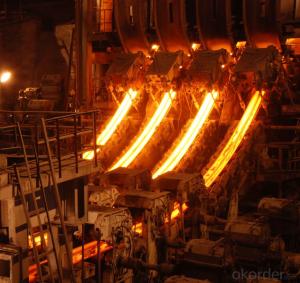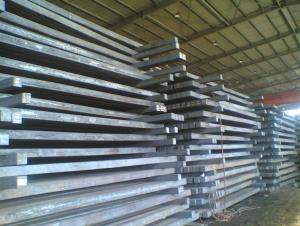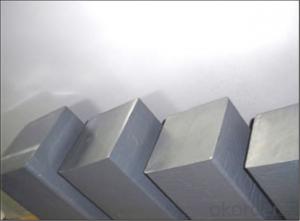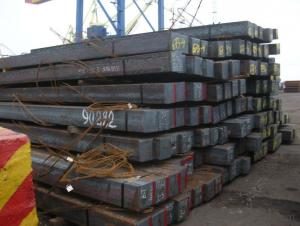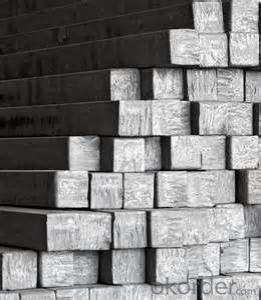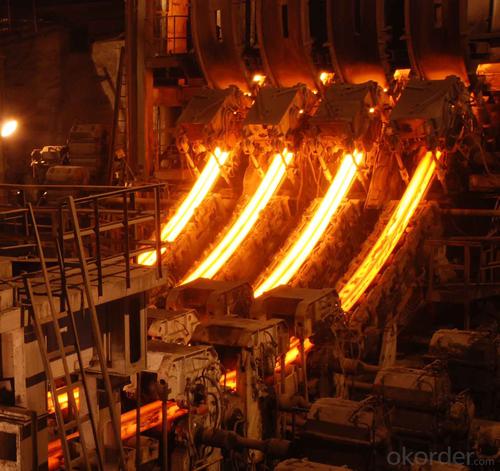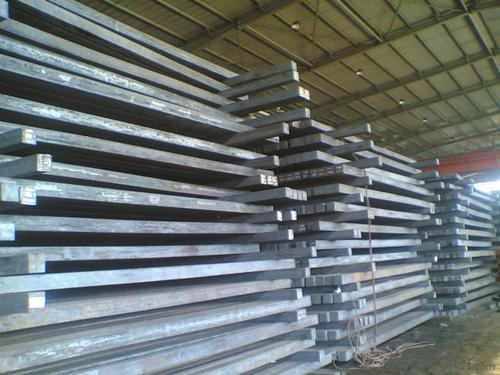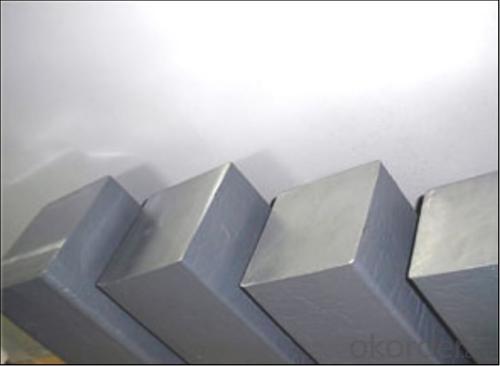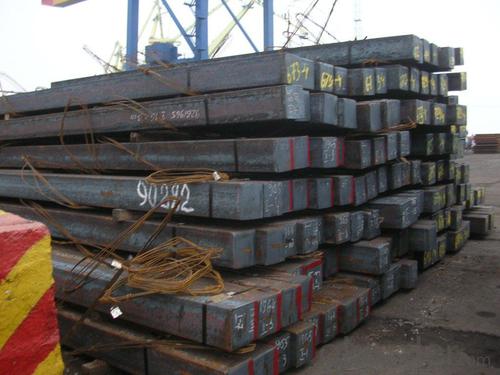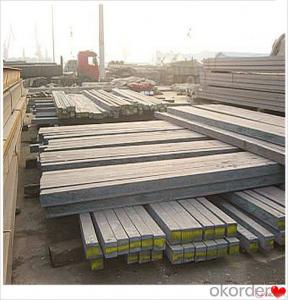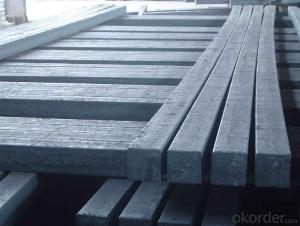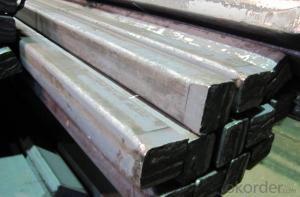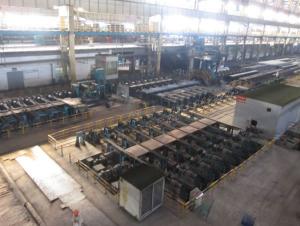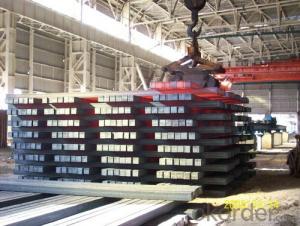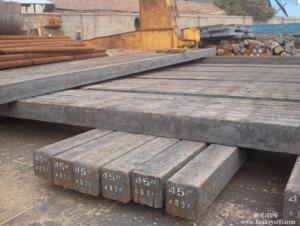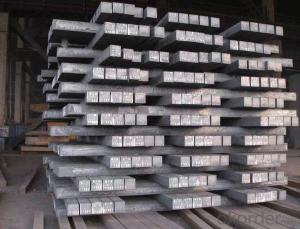Square Steel Billet Q235 3SP Grade Prime Quality 9#
- Loading Port:
- Tianjin
- Payment Terms:
- TT OR LC
- Min Order Qty:
- 2000 m.t
- Supply Capability:
- 50000 m.t/month
OKorder Service Pledge
OKorder Financial Service
You Might Also Like
Description of Square Steel Billet Q235 3SP Grade Prime Quality 9#
M. S. Billets are used for rolling of TMT Re-Bars of Fe415 and Fe500 Grade and various other structural steel products.
CRS Billets are used for rolling of CRS TMT Re-Bars.
Special Alloy Billets are used for rolling of any special grade TMT Re-Bars like Earthquake resistant TMT Re-Bars and for special grade structural steel products.
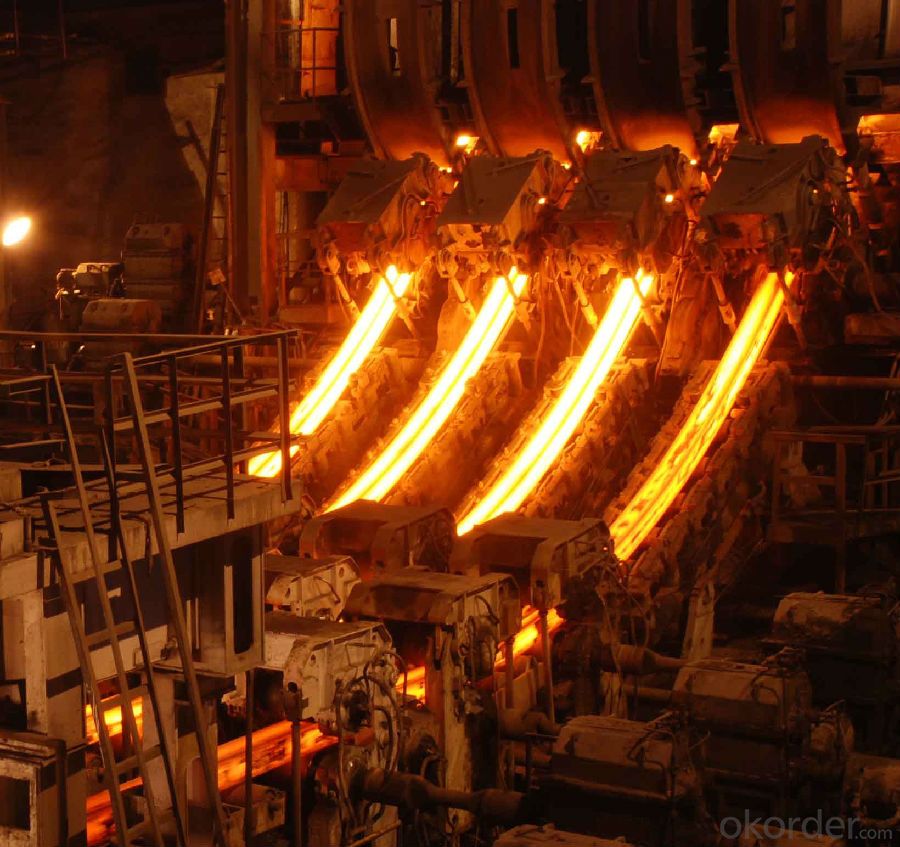
Main Feature Square Steel Billet Q235 3SP Grade Prime Quality 9#
Raw elements(C,Fe,Ni,Mn,Cr,Cu.)---Smelted ingots by AOD finery---hot rolled into black suface---pickling in acid liquid---cold drawn----polished by automatically machine--- cutting into pieces---checking quanlity
Applications of Square Steel Billet Q235 3SP Grade Prime Quality 9#
Widely Used in the areas such as Stainless Steel Fasteners, Chains, Kitchen and Sanitary wares, Furniture handles, Handrails, Electroplating and Electrolyzing pendants, Foods, Electron, Petroleum, Construction and Decoration, etc. Products have a high strength after cold-working. Electronic products parts, Medical appliance, Springs, Bus Inside and Outside packaging and building, Street Lamp Posts, etc. Decoration materials and Outdoor Publicity Billboard. Used for the products which have the Anti-Stress Corrosion requirement. Electron Products, Table-wares, Bolts, Nuts, Screen Meshes, Cumbustors and so on.
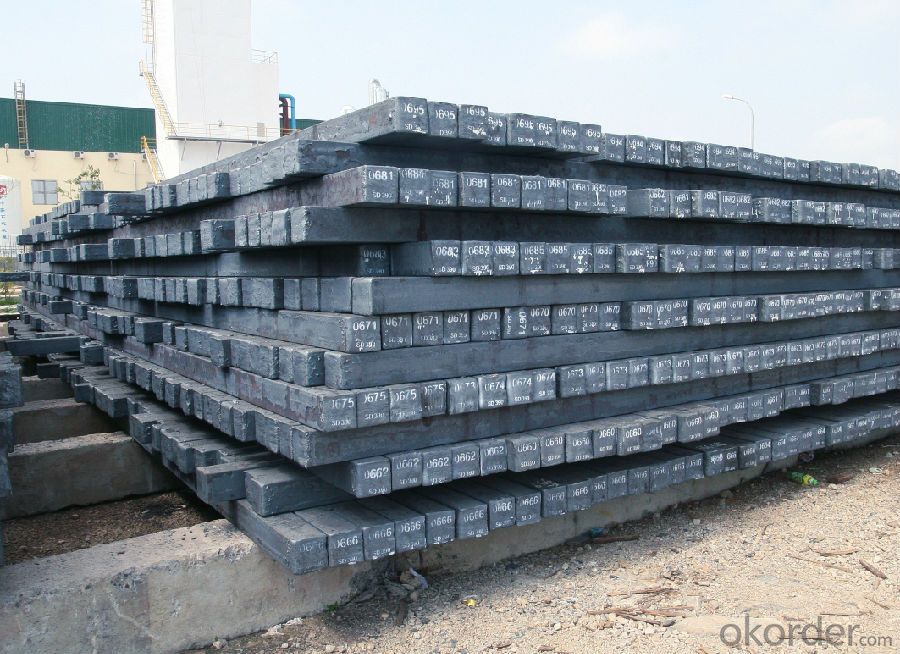
Specifications of Square Steel Billet Q235 3SP Grade Prime Quality 9#
| Standard | C(%) | Mn(%) | S(%) | P(%) | Si(%) |
| Q195 | ≤0.12 | ≤0.50 | ≤0.040 | ≤0.035 | ≤0.30 |
| Q235 | ≤0.20 | ≤1.40 | ≤0.045 | ≤0.045 | ≤0.35 |
| Q275 | ≤0.22 | ≤1.50 | ≤0.045 | ≤0.045 | ≤0.35 |
| 20MnSi | 0.17-0.25 | 1.2-1.6 | ≤ 0.050 | ≤ 0.050 | 0.40-0.80 |
| 3SP | 0.14-0.22 | 0.40-0.85 | ≤ 0.050 | ≤ 0.040 | 0.05-0.15 |
| 5SP | 0.28-0.37 | 0.50-1.00 | ≤ 0.050 | ≤ 0.040 | 0.15-0.30 |
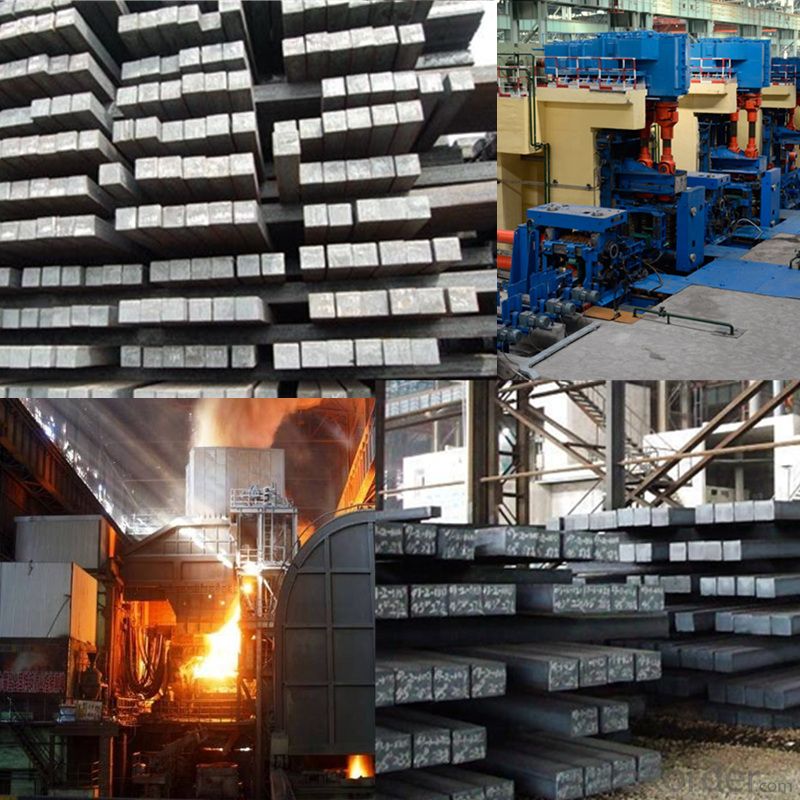
FAQ of Square Steel Billet Q235 3SP Grade Prime Quality 9#
We have organized several common questions for our clients,may help you sincerely:
1. How Can I Visit There?
Our company is located in Tianjin City, China, near Beijing. You can fly to Tianjin Airport Directly. All our clients, from home or aboard, are warmly welcome to visit us!
2. How Can I Get Some Sample?
We are honored to offer you sample.
3. Why choose CNBM?
Our delivery time about 15-20days for standard sizes, if you have other requirements like hardness, quanity and width ,it is about 20-40days. But don't worry we also try our best for the delivery time ,because time longer and our cost is higher.
- Q: How are steel billets used in the manufacturing of power generation equipment?
- Steel billets are used in the manufacturing of power generation equipment as they serve as the starting material for various components such as turbine blades, rotors, casings, and shafts. These billets are shaped, machined, and heat-treated to meet the specific requirements of the equipment, ensuring high strength, durability, and resistance to extreme operating conditions.
- Q: How long do steel billets typically last?
- Steel billets typically last for a very long time. The lifespan of a steel billet depends on various factors such as the quality of the steel, the environment it is exposed to, and how it is used. Generally, high-quality steel billets that are properly stored and handled can last for several decades without any significant deterioration. However, if the billets are exposed to harsh environments or are not properly maintained, their lifespan may be shortened. It is important to note that steel billets can be recycled and reused, further extending their overall lifespan.
- Q: Can steel billets be used for making architectural components?
- Architectural components can indeed be made using steel billets. Steel billets are semi-finished products commonly utilized in the production of various steel items, including architectural components. These billets undergo heating and are subsequently transformed into the desired shape through processes such as forging, extrusion, or rolling. Among the architectural components that can be created are structural elements like beams, columns, and trusses, as well as decorative elements like handrails, facades, and ornamental fixtures. Steel is a highly preferred material for architectural components due to its exceptional strength, durability, and versatility. It can be easily shaped into intricate forms, enabling architects and designers to construct distinctive and visually appealing structures. Moreover, steel exhibits remarkable resistance to weathering, corrosion, and fire, further enhancing its suitability for architectural purposes.
- Q: How do steel billets contribute to the overall strength of a finished product?
- The strength of the finished product heavily relies on the quality of the steel billets used. Steel billets form an essential part of the manufacturing process for various steel products and have a vital role in determining the final product's strength. To start with, steel billets are produced by continuously casting molten steel into solid blocks or forms. This casting method guarantees that the steel billets possess a consistent and uniform structure, which is crucial for maintaining the overall strength of the end product. The uniformity of the billets enables an even distribution of stress and load-bearing capacity throughout the final product. Furthermore, steel billets are typically made from high-quality steel alloys specifically selected for their superior strength properties. These alloys contain elements like carbon, manganese, and other alloying elements that enhance the overall strength and hardness of the steel. The utilization of high-quality steel billets enables manufacturers to create finished products with excellent tensile and yield strength, making them highly resistant to deformation, bending, and breaking. In addition, steel billets undergo various heat treatment processes such as quenching and tempering, which further enhance their strength. Quenching involves rapid cooling of the billets to increase their hardness, while tempering reduces brittleness and improves toughness. These heat treatment processes result in steel billets with improved mechanical properties, including higher yield strength and enhanced resistance to fatigue and impact. Moreover, the size and shape of steel billets also contribute to the overall strength of the finished product. The dimensions of the billets determine the final dimensions of the product, and larger billet sizes allow for a more significant and stronger end product. Similarly, optimizing the shape of the billets improves the load-bearing capacity and structural integrity of the finished product. To conclude, steel billets are crucial for the overall strength of the finished product. Through their uniform structure, high-quality alloys, heat treatment processes, and optimized size and shape, steel billets provide the necessary foundation for the production of robust and long-lasting steel products. Selecting the appropriate steel billets and ensuring their quality throughout the manufacturing process are essential steps in creating a finished product with exceptional strength and performance.
- Q: How is the quality of steel billets determined?
- The quality of steel billets is determined through various factors including chemical composition, physical properties, and visual inspection. Chemical composition analysis involves measuring the levels of different elements present in the billets such as carbon, manganese, and sulfur, as well as checking for any impurities. Physical properties such as tensile strength, hardness, and toughness are tested to ensure the billets meet the required specifications. Visual inspection is also performed to identify any defects like cracks, surface abnormalities, or unevenness. Combining these assessments helps determine the overall quality of steel billets.
- Q: How are steel billets used in the manufacturing of consumer goods?
- Steel billets are a crucial raw material used in the manufacturing of consumer goods. These billets are primarily utilized as feedstock in various metalworking processes such as hot rolling, forging, and extrusion. By shaping and forming the steel billets into desired shapes, manufacturers are able to produce a wide range of consumer goods like automobiles, appliances, construction materials, and machinery components. The high strength and durability of steel make it an ideal choice for consumer goods, ensuring reliability and longevity in the final products.
- Q: What are the potential applications of steel billets in the food and beverage aftermarket?
- Steel billets have limited applications in the food and beverage aftermarket due to their inherent properties and composition. However, they can be used in certain non-direct contact applications such as equipment fabrication, machinery parts, or structural components in food processing facilities. These billets can provide strength, durability, and stability, contributing to the overall infrastructure and functionality of the food and beverage industry.
- Q: What is the billet price in China today?
- In the short term is still the main shock, the domestic price rise compared to the previous 10 yuan / ton, the price is not the same in each region, so you still have to carefully check the price, from the upstream iron ore, domestic ore prices stabilize, without much change, with the real estate back to temperature.
- Q: How are steel billets made?
- The process of making steel billets is known as casting. It begins by melting raw materials like iron ore, coal, and limestone in a blast furnace until they become molten iron. This molten iron is then further purified in either a basic oxygen furnace or an electric arc furnace to adjust its composition and remove impurities. Once the desired composition is achieved, the molten iron is poured into a continuous casting machine. This machine contains a copper mold that is cooled by water, which shapes the molten iron into a solid billet. As the molten iron is poured into the mold, it cools rapidly and solidifies, creating a continuous length of solid steel. The billet is then cut to the desired length and moved to a storage area to cool down even more before undergoing further processing. The cooling process is vital as it helps improve the internal structure and overall quality of the billet. After cooling, the steel billets can undergo various treatments, such as heat treatment or surface conditioning, to enhance their mechanical properties and surface finish. They can also be processed further into different shapes and sizes through methods like rolling, forging, or extrusion to meet specific requirements of customers. In summary, the production of steel billets involves melting the raw materials, purifying the molten iron, casting it into a continuous mold, and subsequently cooling and processing the solid billets. This process guarantees the production of high-quality steel billets that are essential components for industries such as construction, automotive, and manufacturing.
- Q: How to calculate the cost price of billet?
- The ratio of slag to billet (63% fine powder) is about 3:1, which accounts for about 60%. of billet cost
Send your message to us
Square Steel Billet Q235 3SP Grade Prime Quality 9#
- Loading Port:
- Tianjin
- Payment Terms:
- TT OR LC
- Min Order Qty:
- 2000 m.t
- Supply Capability:
- 50000 m.t/month
OKorder Service Pledge
OKorder Financial Service
Similar products
Hot products
Hot Searches
Related keywords
